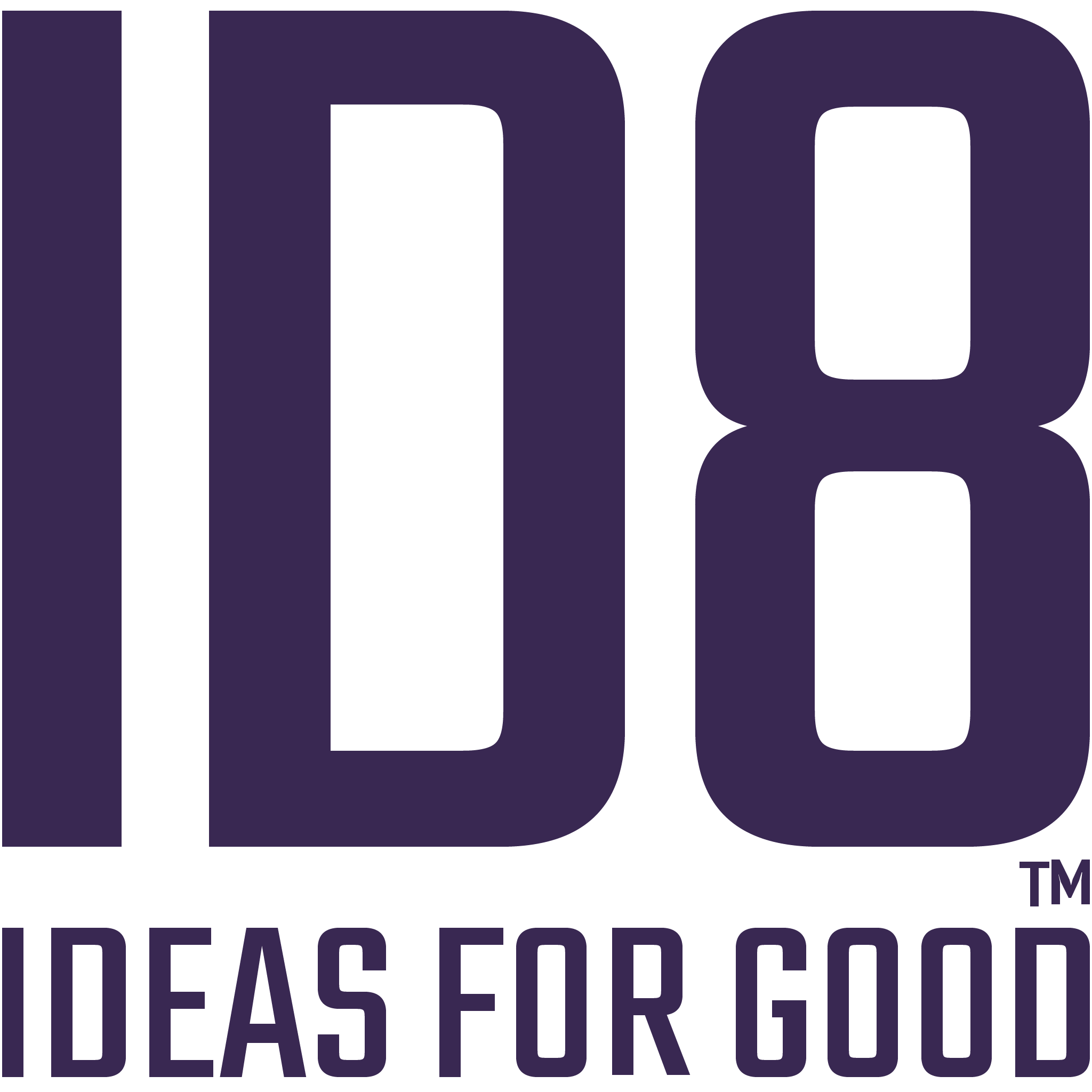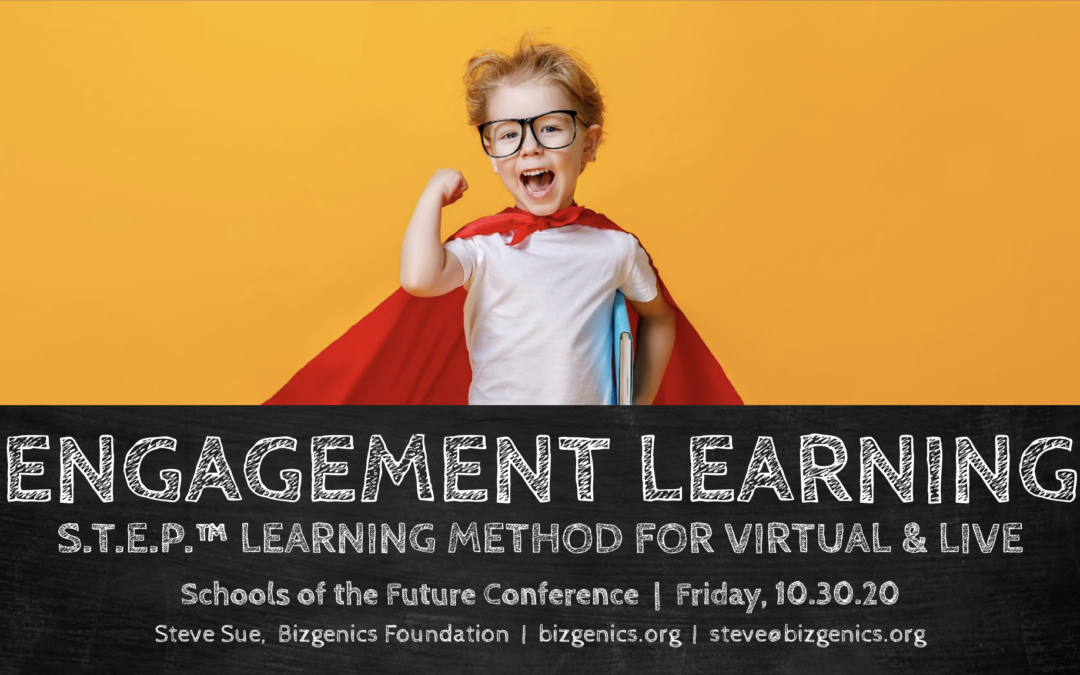[su_button url=”https://www.slideshare.net/stevesue/engagement-learning-239024468″ target=”blank” background=”#f49e1d” size=”11″ center=”yes” radius=”5″]See Presentation Deck »[/su_button]
[su_divider top=”no” divider_color=”#ffffff” link_color=”#ffffff” size=”2″]
Can Online Learning Be Improved?
On Friday, 10.30.20, Steve Sue, (me) presented S.T.E.P.™ Learning Method theory at the virtual Schools of the Future Conference. The mission: outline some promising new practices for creating higher levels of engagement for both virtual remote online as well as in-class learning. In this age of COVID-19 the truth is that early-stage Learning Management Systems (LMSs) are simply not that sophisticated in applying the power of information technology to make learning more engaging that in traditional circumstances. In fact, the traditional model of core knowledge tested online, turns out to be mid-numbing for students, resulting in students checking out and worse, dropping out. At the same time, learning paradigms have not evolved to leverage the opportunities of info tech, so this session was dedicated to outlining a new approach to blended pedagogies that will evolve education into what it could, or should be.
Next-Gen Curriculum Word Cloud
A few traditional education concepts were discussed. Core / Assess was recognized as still essential to setting core building block knowledge for creativity and critical-thinking but also recognized that this approach alone, can result in disengagement due to low perceived relevancy. Additionally, “edutainment” and “gamification” often digress into either sugar-coated boredom or non-educational experiences. E-sports for example holds great promise to engage, however many educators take issue with whether it will in fact move the needle of career pathway learning. On the flip-side, Next-Gen concepts including student voice, design-thinking, hackathons, creativity, innovation, entrepreneurship, team collaboration and social ventures were highlighted as modern additions to traditional core learning that hold great promise for delivering both 21st Century Soft Skills and student engagement at the same time.
Relevancy = Engagement
The controlling theory of this presentation is that showing how a learning experience is directly relevant to a student’s personal needs is the key to creating engagement. For example, if you’re going to open a lemonade stand to make money to buy a boogie board, it pays to learn math so you can get your board as soon as possible. As one attendee correctly noted today in the sidebar chat, this is the value of making the “BIG WHY” transparent to the student.
S.T.E.P.™ Learning Method
STEP Method is a blended education model that combines the best of Lesson- (Core, Quiz & Assessments), Project- and Contest-based learning. This is accomplished through sequencing the follow experiences:
- SEE: The acquisition of core knowledge as a building-block starting point to leverage into critical-thinking experiences.
- TRY: Hands-on exercises for students to experience and practice core skills. Also includes quizzes as a form of exercise and assessment.
- EVOLVE: Project-based learning, starting from play-space learning in elementary, moving to step-by-step project-based learning in middle school and to problem-based (identifying a problem and solution), innovation-based and ultimately entrepreneurship-based learning (identifying a problem, creating a solution and tracking an outcome such as helping people, planetary sustainability or making a profit).
- PITCH: Challenge-based learning is a key relevancy driver as students enjoy multiple values from participating in contests. Awards, prizes, social experiences, self-expression and having the chance to be creative are attractive drivers that yield high levels of engagement.
S.T.E.P. + Collaboration = Soft Skills
It’s also worth noting that the combination of STEP Learning with collaborative student team events breeds the kind of Soft Skills that employers demand. Soft Skills defined as 4Cs Skills (Creativity, Critical-Thinking, Collaboration and Communication) work better and in fact mostly require collaboration. Many minds give wider perspective. And communication requires both a communicator and an audience, thus is inherently collaborative.
Teacher’s New Role: “Creative Coach”
Within the STEP model, a new role for teachers emerges. While there’s still a drip-feed role in the See and Try phases (core knowledge, exercises and assessment), the Evolve and Pitch phases move teachers into more of a coaching role for PBL and challenge-based activities. This new role in the coaching metaphor allows for guidance from a teacher, yet allows for student voice. In the metaphor of football, the teacher is like the coach who teachers set plays, yet the quarterback on the field has the liberty to call audibles or change plays at will. This new role is both a tried and true formula for success as well as an accepted social model that everyone is able to contribute their highest use in a collaborative circumstance.
STEP Case Studies
Several case studies that use the STEP model were presented along with links to more information:
- LemonadeAlley.com
- ProjectLemonTree.com
- SEO Literacy: bizzyb.com/seo-literacy
- BizzyB.com
- slideshare.net/stevesue/engagement-learning
Huge Mahalo to Megan Polak of HAIS and the entire crew at SOTF for getting us all online and able to share leading-edge ideas on next-gen education!

